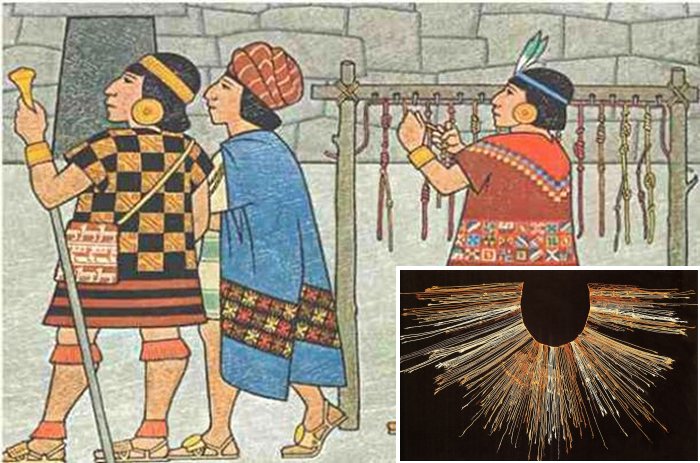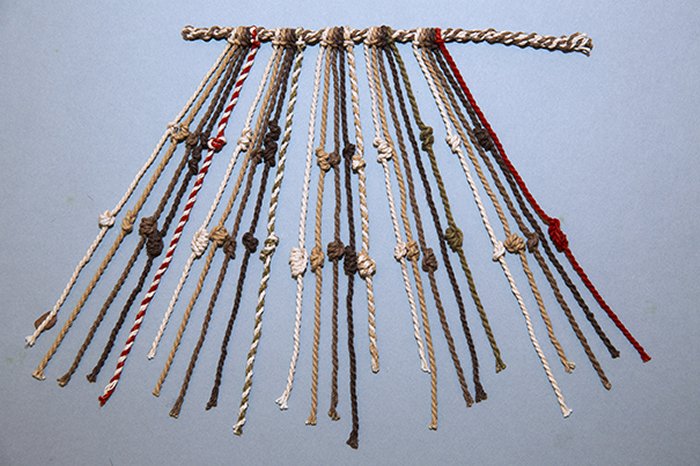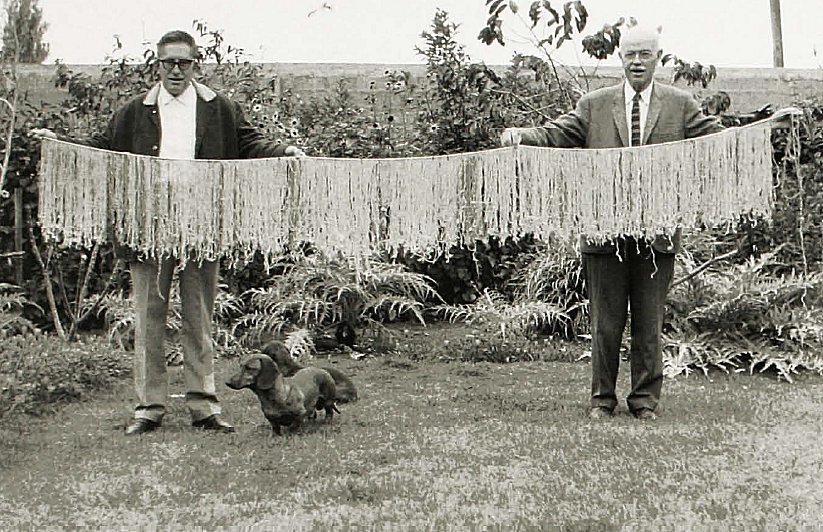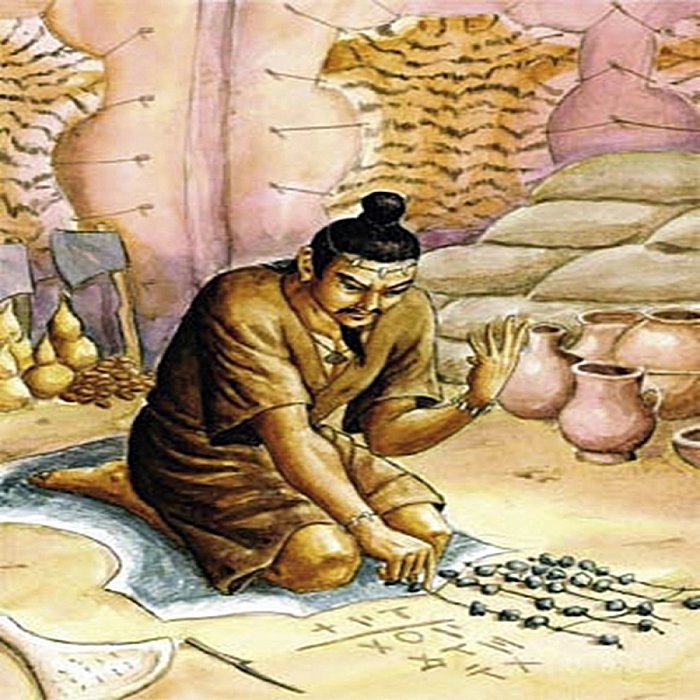Secrets Of Quipu – Ancient Inca Message Decoded By Student
AncientPages.com - Unraveling the secret of the quipu is by no means easy, but one student has successfully decoded an ancient Inca message.
The Inca had no written language. To communicate they invented the quipu, a form of non-verbal communication written in an encoded language similar to the binary code used by modern computers.
A quipu (or ‘khipu’ – (in Quechua ‘knot’) was a series of strings with knots. The number of knots, the size of the knots, and the distance between knots conveyed meaning.
As mentioned earlier on Ancient Pages, the quipu is one of the most mysterious phenomena that existed in odd number of dimensions.
Deciphering the knots is of great importance as it gives a better understanding of what life was like for the Inca. A quipu contains a secret message and when we decode it, we give South American people a chance to speak.
Manny Medrano is a Harvard student who has made an astonishing archaeological breakthrough. Together with his Professor, Gary Urton, a scholar of Pre-Columbian studies, Medrano interpreted a set of six quipus, knotted cords used for record keeping in the Inca Empire.
“There’s something in me, I can’t explain where it came from, but I love the idea of digging around and trying to find secrets hidden from the past,” Medrano said.
“I could never figure out the hidden meanings in these devices. Manny figured them out, focusing on their color, and on their recto or verso (right-hand and left-hand) construction. This was the only case we have discovered so far in which one or more (in this case six) quipus and a census record matches,” Professor Urton said.
A study by Manny Medrano '19 (from right), with guidance from Professor Gary Urton, has decoded the meaning behind khipus, an Incan bookkeeping method of knotted rope. Credit: Jon Chase/Harvard Staff Photographer
Medrano has compiled a database of hundreds of quipus from museums around the world and was later hired by his professor help organize citations in his recently published book, “Inka History in Knots: Reading Khipus as Primary Sources.”
See also:
‘Collata Quipu’ May Explain Messages Hidden In Mysterious Writing Of Inca
What Were The Most Important Inca Laws That All Citizens Had To Respect?
Inca Communication: Mailmen Of The Inca Empire Were Fast Roadrunners
Story Of Atahualpa: The Last Emperor Of The Inca Empire
“I have been studying some 600 khipus across North America and Europe — not just their color, but the way the cords are spun to the left or to the right, and other such features. There is a lot of structural variation,” Professor Urton said.
“I knew we would have our greatest possibility of deciphering these in a match with one or more with a Spanish document that recorded the same information.”
The sacred ancient message Medrano decoded was written by a peasant named Diego who had lived in a remote village in the Inca Empire in the late 1600s.
“We now know not only that there were six clans in the valley, but also what social status each clan and each villager held in Recuay society,” Medrano said.
It’s a great step in the right direction because none of the quipus Proefessor Urton studied could be understood on a very detailed level. If the quipus held messages or cultural information beyond just numbers, the meanings were unknown to modern scholars.
The quipu system was good and very accurate. It was traditionally handed down from fathers to sons, with all recorded past events, repeating the story of them many times, over and over again until they were all finally memorized for future generations.
By decoding more quipus we can gain extremely valuable information about the Inca Empire
The use of the “quipu” for accounting purposes has been predominantly attributed to the Inca culture of Peru; however, documented evidence shows that early Hawaiians and ancient Chinese used it much earlier.
As Ancient Pages wrote before, the ancient Chinese version of quipu and the tradition of tying knots dates back to antiquity.
The art of tying knots spread to neighboring countries, such as Korea, Japan and Hong Kong.
Copyright © AncientPages.com. All rights reserved. This material may not be published, broadcast, rewritten or redistributed in whole or part without the express written permission of AncientPages.com
More From Ancient Pages
-
 There Is Evidence Humans Reached North America 130,000 Years Ago – Archaeologist Says
Archaeology | Mar 28, 2022
There Is Evidence Humans Reached North America 130,000 Years Ago – Archaeologist Says
Archaeology | Mar 28, 2022 -
 LIDAR Technology Reveals Secrets Of Ancient Maya Civilization
Archaeology | Feb 3, 2018
LIDAR Technology Reveals Secrets Of Ancient Maya Civilization
Archaeology | Feb 3, 2018 -
 Dura-Europos Roman Shield Created With Ancient Painting Techniques On Wood
Archaeology | Nov 9, 2015
Dura-Europos Roman Shield Created With Ancient Painting Techniques On Wood
Archaeology | Nov 9, 2015 -
 On This Day In History: Great Siege Of Gibraltar Begins – On June 16, 1779
News | Jun 16, 2016
On This Day In History: Great Siege Of Gibraltar Begins – On June 16, 1779
News | Jun 16, 2016 -
 ‘Curious’ Creature With No Anus Is Not Earliest Human Ancestor – Relieved Scientists Discover
Archaeology | Aug 18, 2022
‘Curious’ Creature With No Anus Is Not Earliest Human Ancestor – Relieved Scientists Discover
Archaeology | Aug 18, 2022 -
 Controversial 9,7-Million-Year-Old Teeth May Re-Write Human History – Is European Continent The Cradle Of Humanity?
Archaeology | Oct 20, 2017
Controversial 9,7-Million-Year-Old Teeth May Re-Write Human History – Is European Continent The Cradle Of Humanity?
Archaeology | Oct 20, 2017 -
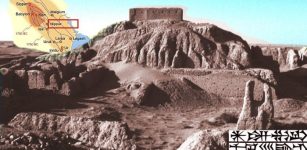 Nippur – Holy City Of God Enlil And One Of The Oldest Cities Of Sumer
Featured Stories | Jul 24, 2023
Nippur – Holy City Of God Enlil And One Of The Oldest Cities Of Sumer
Featured Stories | Jul 24, 2023 -
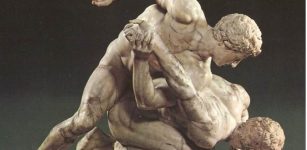 What Was The True Meaning Of Pankration And Other Ancient Games
Archaeology | Sep 11, 2021
What Was The True Meaning Of Pankration And Other Ancient Games
Archaeology | Sep 11, 2021 -
 Meet The First Neanderthal Family And Community
Archaeology | Oct 19, 2022
Meet The First Neanderthal Family And Community
Archaeology | Oct 19, 2022 -
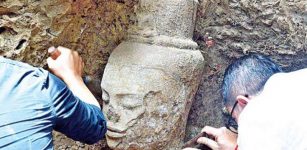 Sandstone Head Of A Bodhisattva Discovered Near Ta Nei Temple
Archaeology | Oct 15, 2019
Sandstone Head Of A Bodhisattva Discovered Near Ta Nei Temple
Archaeology | Oct 15, 2019 -
 Petroglyphs Hold Secrets To 14,000 Years Of Human Life In Iran
Archaeology | Apr 30, 2020
Petroglyphs Hold Secrets To 14,000 Years Of Human Life In Iran
Archaeology | Apr 30, 2020 -
 Bes: Egypt’s Intriguing Dwarf God Of Music, Warfare And Protector Against Snakes, Misfortune And Evil Spirits
Egyptian Mythology | Jul 31, 2016
Bes: Egypt’s Intriguing Dwarf God Of Music, Warfare And Protector Against Snakes, Misfortune And Evil Spirits
Egyptian Mythology | Jul 31, 2016 -
 Streets Of Ancient Rome Were Very Dangerous
Ancient History Facts | Feb 29, 2016
Streets Of Ancient Rome Were Very Dangerous
Ancient History Facts | Feb 29, 2016 -
 Ancient Wall Of Lolei Temple Built In 893 BC Unearthed In Siem Reap, Cambodia
Archaeology | Apr 20, 2020
Ancient Wall Of Lolei Temple Built In 893 BC Unearthed In Siem Reap, Cambodia
Archaeology | Apr 20, 2020 -
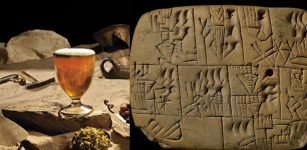 World’s Oldest Paycheck Reveals Ancient Sumerian Workers Were Paid In Beer
Ancient History Facts | Nov 22, 2018
World’s Oldest Paycheck Reveals Ancient Sumerian Workers Were Paid In Beer
Ancient History Facts | Nov 22, 2018 -
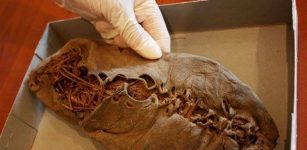 World’s Oldest Shoe Is 5,000-Year-Old
Archaeology | Jul 10, 2015
World’s Oldest Shoe Is 5,000-Year-Old
Archaeology | Jul 10, 2015 -
 3,200-Year-Old Mycenaean Statuette Sheds New Light On The Hittites
Archaeology | Jun 22, 2022
3,200-Year-Old Mycenaean Statuette Sheds New Light On The Hittites
Archaeology | Jun 22, 2022 -
 Evidence Norse Greenlanders Imported Timber From North America
Archaeology | Apr 18, 2023
Evidence Norse Greenlanders Imported Timber From North America
Archaeology | Apr 18, 2023 -
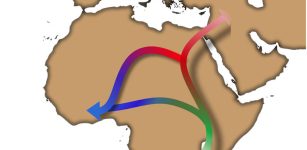 Artificial Intelligence Reveals The Out Of Africa Expansion Is More Complex Than Previously Thought
Archaeology | Oct 18, 2021
Artificial Intelligence Reveals The Out Of Africa Expansion Is More Complex Than Previously Thought
Archaeology | Oct 18, 2021 -
 Rare Roman Mosaic Depicting The Adventures Of Greek Hero Achilles Discovered In Rutland, UK
Archaeology | Dec 4, 2021
Rare Roman Mosaic Depicting The Adventures Of Greek Hero Achilles Discovered In Rutland, UK
Archaeology | Dec 4, 2021

